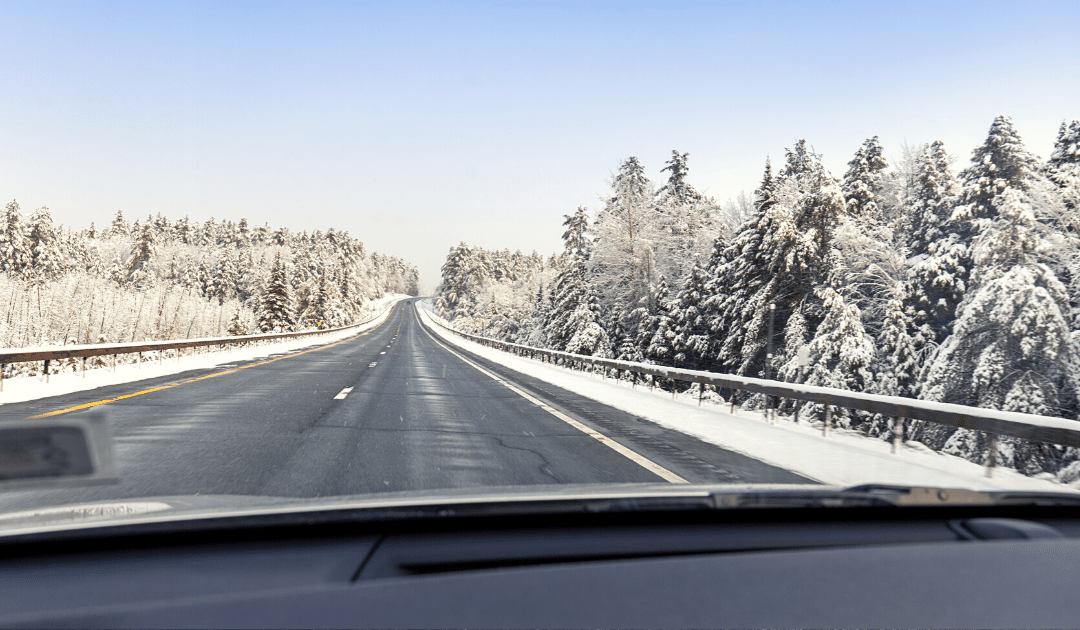
by California Casualty | Auto Insurance Info, Homeowners Insurance Info |
The same winter wonderland scene that gives us soft snowdrifts outside cozy living rooms can also serve up treacherous blizzards, freezes, and black ice.
Contrary to its name, black ice is actually clear and forms a frozen “glaze” that coats all kinds of surfaces and can cause slips, falls, and car accidents. It’s incredibly dangerous not only because of how slippery it is but also because it’s so hard to spot. Transparent and thin, it can hide in plain sight.
It frequently occurs on roads, sidewalks, porches, pathways, and driveways – in other words, surfaces we frequent to get where we’re going every day. Here are some ways to stay safe at home and on the road when conditions are ripe for black ice.
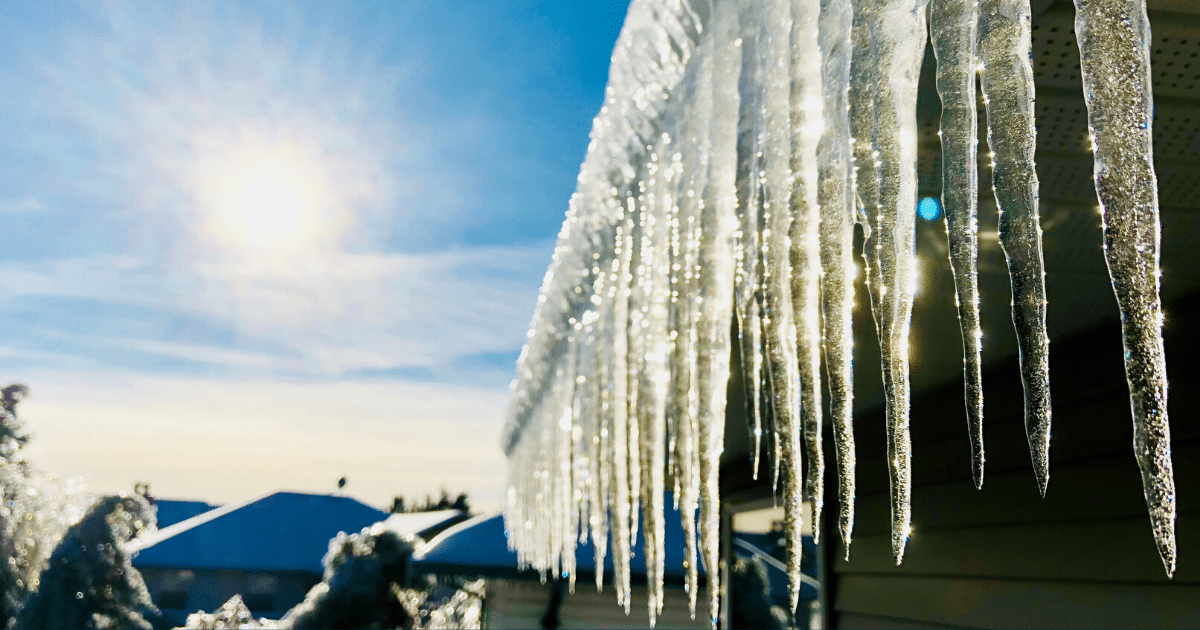
At Home
Besides your driveway, you probably have paved walkways or other hard-surfaced paths around your home. These tips will help reduce injury risk when ice is underfoot, and before it forms.
-
- Unblock drains and gutters. This will help melting snow and ice go where you want it to, so it doesn’t freeze on walkways.
- Keep up with snow shoveling. Make sure to keep up with falling snow so that it doesn’t melt and refreeze into a slipping hazard.
- Put out a tarp. If freezing temps are on their way, lay out a tarp or cloth where you want to prevent black ice. This can include your car, porch, pathways, and the driveway.
- Add some grit. You can sprinkle fine gravel, sand, kitty litter, wood ash or coffee grinds on surfaces to reduce slickness. A note of caution that some work better than others and some can leave a mess.
- Consider a snow-melting mat. If you deal with freezing temps very often, you might want to look into heated driveway mats, which can be effective at preventing black ice formation.
- During icy conditions
- Clear out the snow. If snow has fallen, clear it out so the sun can dry the surface rather than melt the snow into ice.
- Consider a de-icer. Use these with caution though (and probably as a last resort), as some can be harmful to pets, your yard, driveway, and the environment. Try not to over-salt, either, for the same reasons.

In the Car
When temps are at or below freezing, avoid driving if you can. But if you have to get on the road, keep these precautions in mind.
-
- Check the tires. Tires are the only part of your car that touches the road. The less tread, the less traction. If they’re getting worn, replace them asap. Better yet, get winter tires.
- Know your brakes. Standard brakes perform differently from anti-lock, or ABS, brakes, so make sure you know what kind you have and how they behave in snowy, icy, and other hazardous road conditions.
- Do a winter safety check. Make sure your vehicle is prepped for winter safety (and stranding as a worst-case scenario!) – follow our tips here.
- Double-check your car kit. All it takes is one small patch of black ice to cause a slide that lands you immobile on the roadside. Check that your emergency winter car kit contains everything you need.
- Warm-up your car. Let your car warm up before getting on the road. When you feel the heat coming through the vents, it’s sufficiently warmed and ready to go.
- Improve your visibility. Make sure you set out with 100% visibility. If your windshield is foggy inside or iced over on the outside, use our tips here to get it cleaned off and clear.
- Take your time. Give yourself extra time to get where you’re going and be sure to drive much slower than you normally would – this will give you and other drivers more time to react if you need to.
- Slow down and increase following distance. Give yourself and other drivers more room than normal – and never tailgate.
- Know what to do in a skid. If your car goes into a skid, do not hit the accelerator or the brakes. Instead, steer gently in the direction of the skid, making sure not to jerk the steering wheel. Get the full step-by-step info here.
Your best bet against injuries caused by black ice is to use an abundance of caution, make prevention a habit and develop a “sixth sense” for spotting this wintertime danger. Stay safe out there!
This article is furnished by California Casualty. We specialize in providing auto and home insurance to educators, law enforcement officers, firefighters, and nurses. Get a quote at 1.866.704.8614 or www.calcas.com.

by California Casualty | Auto Insurance Info, Safety, Travel |
The holidays are HERE, and unfortunately so is the holiday traffic. As millions hit the road to travel near and far this holiday season roadways will quickly become overly congested, traffic delays more frequent, and holiday road rage will start to set in for many drivers.
If you are like the thousands of Americans hitting the road this season, follow our holiday traffic safety tips below.
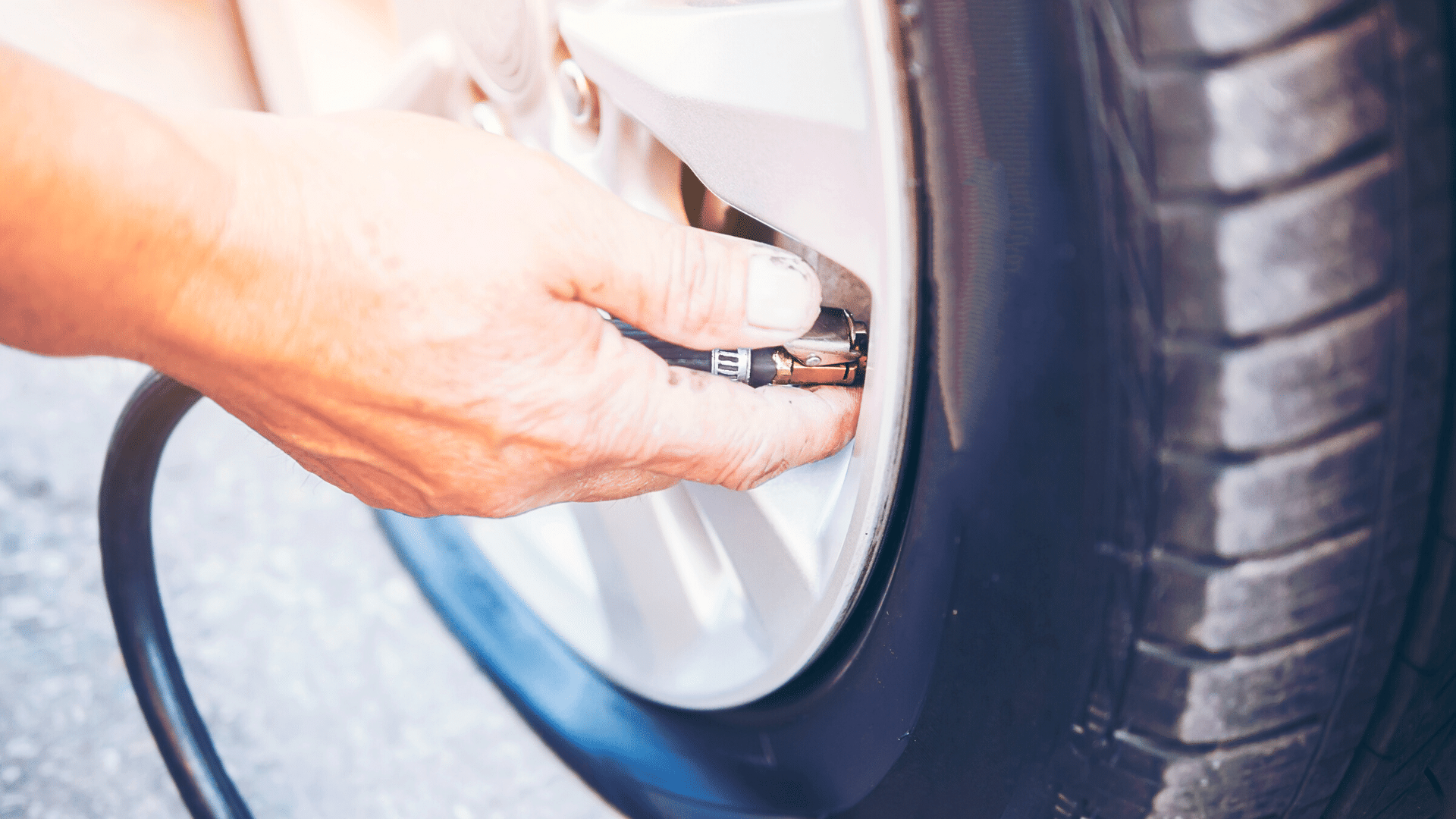
1.Plan Head
Before you hit the road make sure your vehicle is properly maintained and ready for the trip. Plan out your route ahead of time, and if it’s possible, avoid driving through areas you know will be jammed with holiday traffic. Before you head out it’s also a good idea to check the forecast and plan ahead for inclement weather. Don’t forget to pack your emergency car kit!
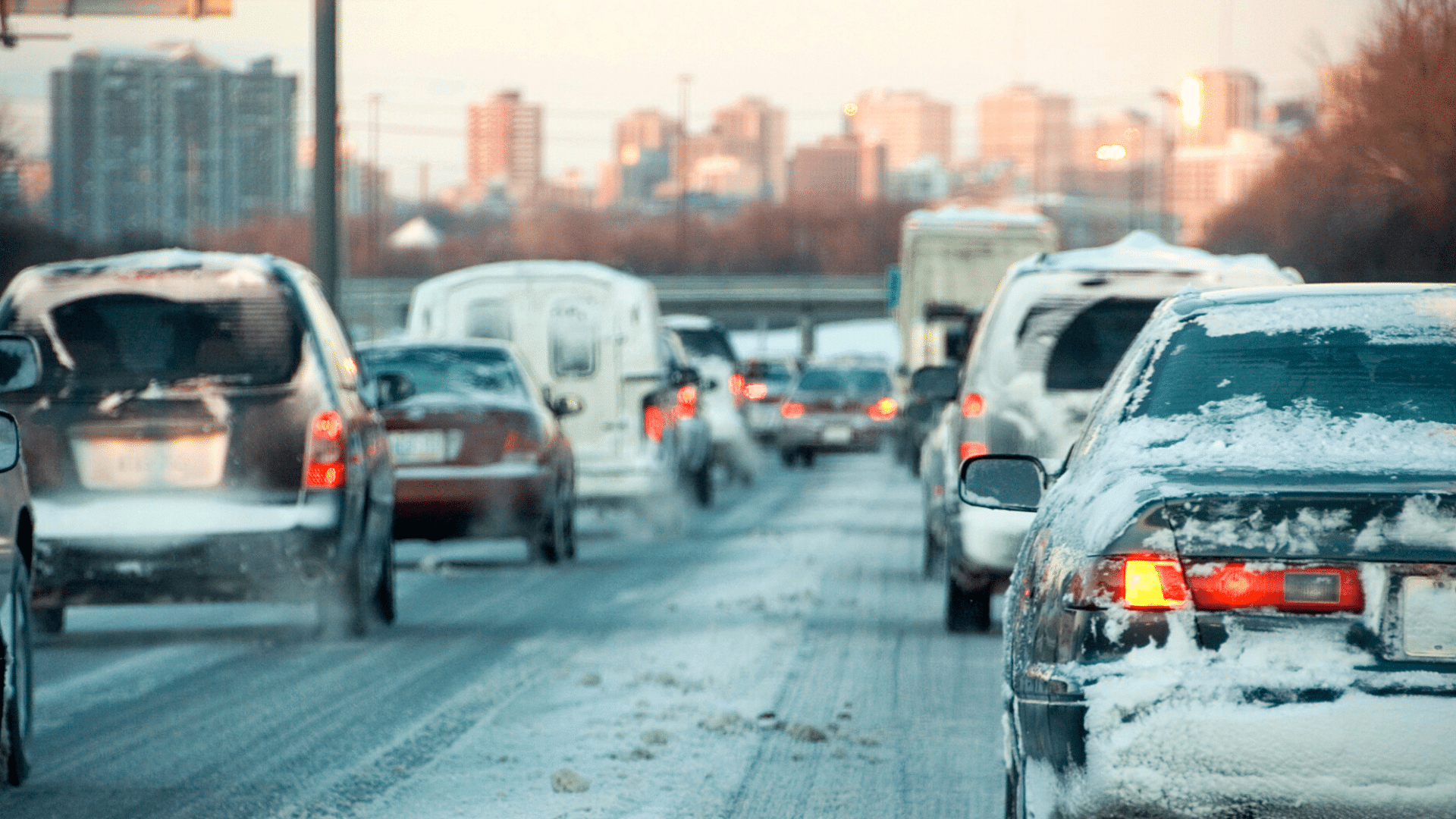
The more traffic, the higher the chance for an accident. It’s important not only to drive safely, but also to keep an eye on other drivers. In holiday traffic jams always expect the unexpected, watch for drivers cutting you off, slamming on their breaks, speeding up and slowing down, etc. Be prepared for anything, and always stay attentive behind the wheel.
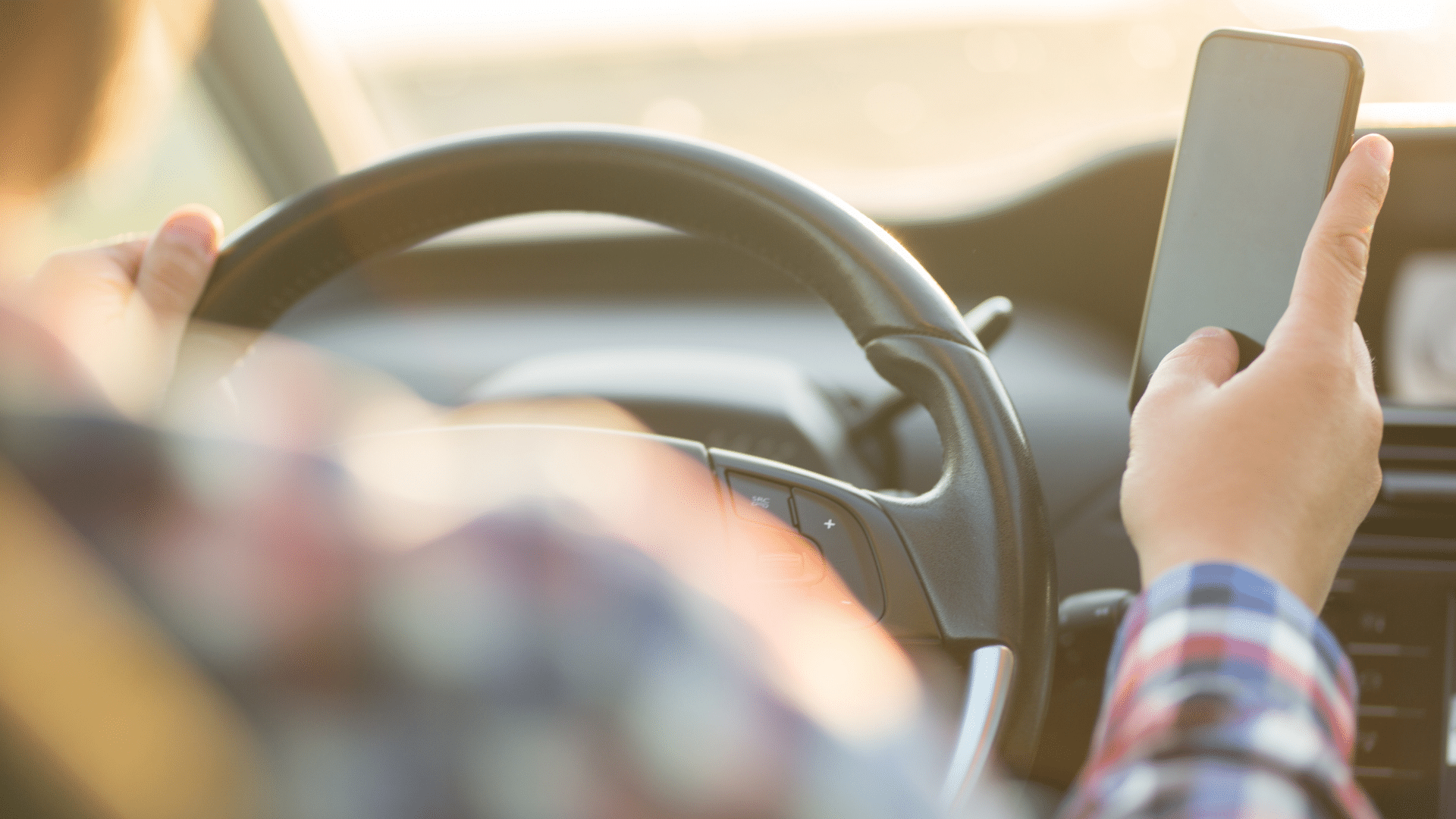
3. Avoid Distractions
Distracted driving causes thousands of fatal traffic accidents every single year. Add in holiday traffic and distracted driving becomes even more dangerous and deadly. We know it can be hard to avoid common distractions like your phone, especially when you are driving long distances by yourself, but it’s important for your safety that you keep your eyes on the road and your hands on the wheel at all times.
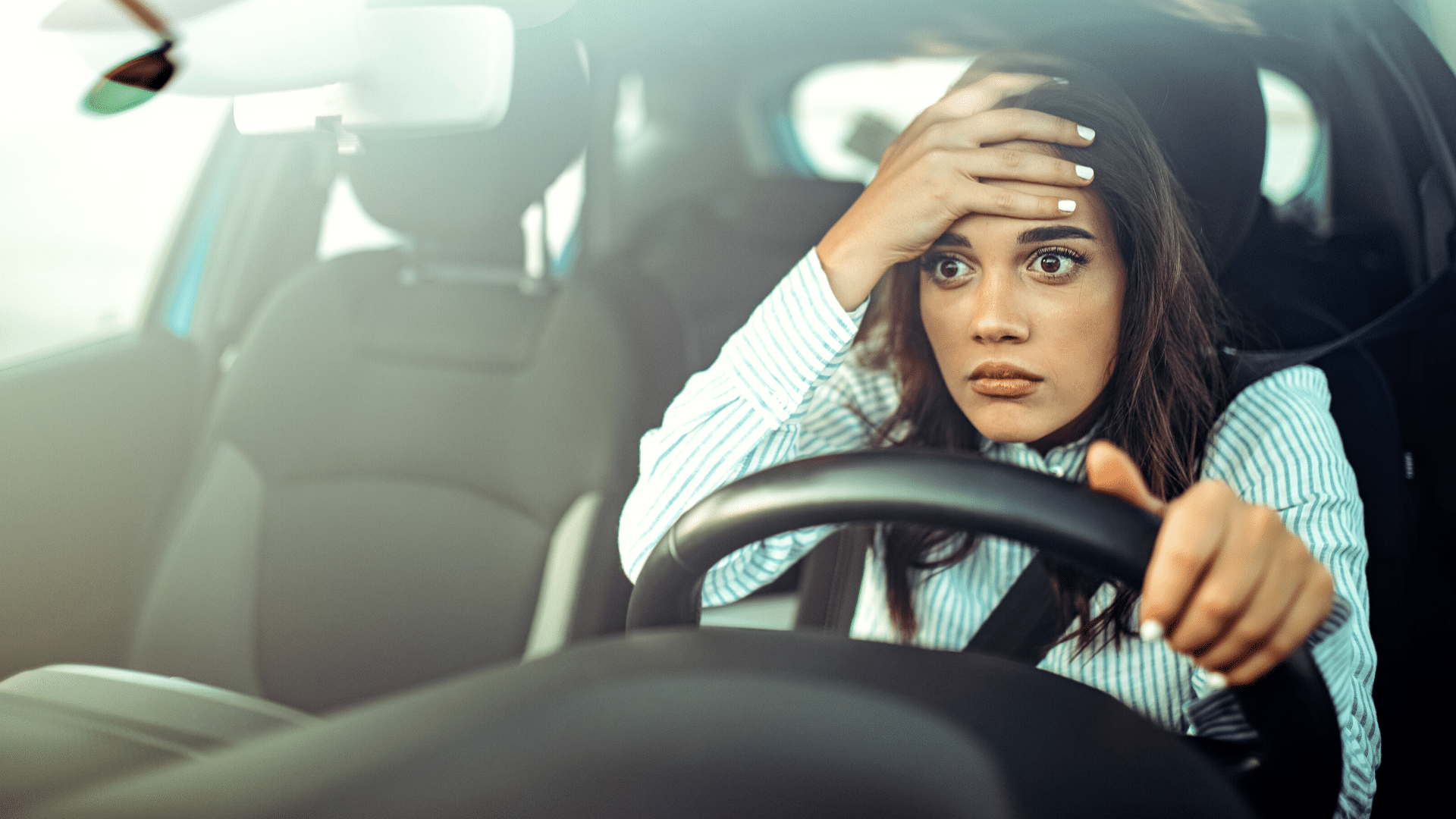
4. Keep Your Cool
If someone makes a decision that makes you angry when you are driving, try not to let it affect you. This may be hard, but getting angry doesn’t solve anything. Road rage is a form of distracted driving because you cannot think clearly. If you start to feel yourself becoming angry or anxious try listening to music, taking deep breaths, and remember there is nothing you can do about other driver’s decisions or to make traffic move quicker- so stay calm.

5. Watch for Animals
Deer move with cold fronts. This means as the temperature continues to drop and as we get closer to the end of the year, the likelihood of seeing or hitting a deer increases. Hitting a deer, or any other animal, can total your vehicle, hinder your plans, and even cause serious injury (or death). Stay alert and watch for animals, especially if you choose to travel in rural areas at night.
If you plan on making multiple stops or staying at any hotels during your trip, be sure to follow our Traveling Safely During the Pandemic guide.
Safe travels and Happy Holidays! 🙂
This article is furnished by California Casualty. We specialize in providing auto and home insurance to educators, law enforcement officers, firefighters, and nurses. Get a quote at 1.866.704.8614 or www.calcas.com.
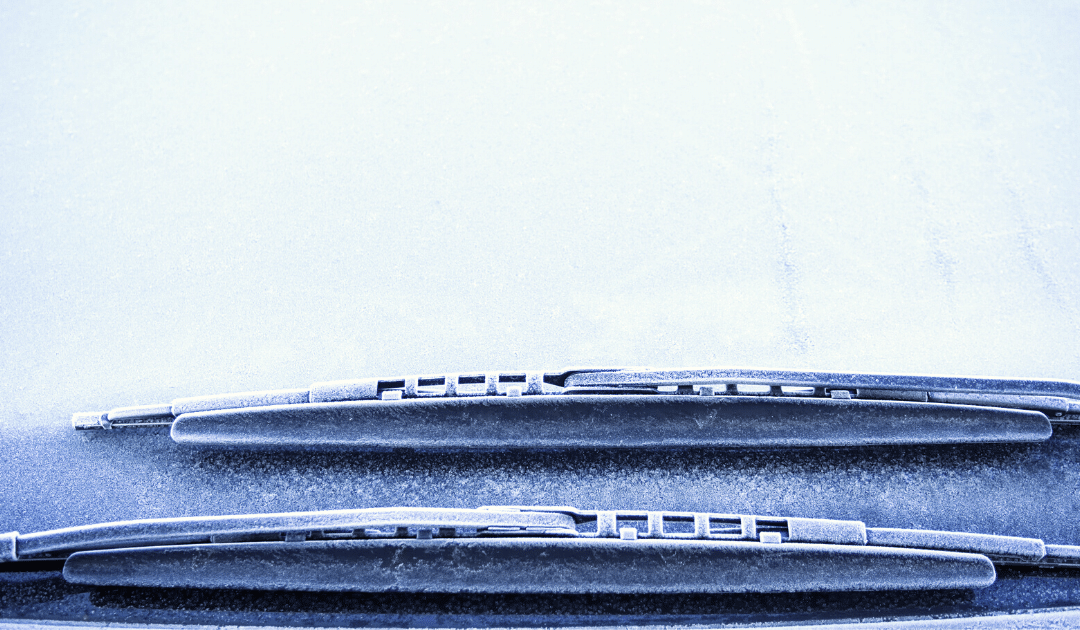
by California Casualty | Auto Insurance Info |
What’s makes a hectic, rushed morning even worse? Coming outside to find your windshield frosted over.
Get on the road quickly and safely by using one or more of these defrosting hacks. We’ve also included “don’ts” for each one to help you get precious morning minutes back and prevent damage to your windshield.
Remove the Bulk of Ice
DO use a soft brush or ice scraper to remove caked ice on your windshield. Choose a scraper made of plastic.
DON’T use a metal scraper, key or spatula. Metal items or those not specifically made for windshields may scratch, cut or damage the glass.
Do a Slow Warm
DO start your car and turn on the defroster. Depending on how cold it is, defrosting may take anywhere from 5 to 15 minutes. This will melt any remaining ice and also defog the inside of the glass. You can also turn the heater onto its highest setting to absorb excess moisture from the cab.
DON’T use other heat sources such as a hairdryer or portable heater. Rushing the heating process can easily crack glass as it goes from cold to hot quickly. Your defroster is calibrated for safe heating.
Turn on the A/C
DO turn on your air conditioning. Even though this seems counterintuitive, the A/C function will help dry the air, which is especially helpful when it’s rainy outside. And yes, you can use your heater and A/C at the same time.
DON’T turn on the air recirculation button. Winter air is typically dry, so you’ll want to pull in fresh outside air when defrosting to replace the more humid air inside the vehicle.
Use Water
DO pour cold to lukewarm water on the windshield to help the defrost process along. You can also do this to any frozen-over door handles.
DON’T pour hot water onto a frosty or icy windshield. Just as with other heat sources, this can crack the glass.
Use a De-Icing Solution
DO use a DIY or store-bought spray to de-ice your windshield if you’d rather not scrape. If making your own, mix two parts rubbing (or isopropyl) alcohol with one part water in a spray bottle and spray over the ice. You can keep this solution in your car, as alcohol won’t freeze until about -128 deg F.
DON’T use hot water in the solution.
Frosted windshields are one of winter’s annoying inconveniences, but unfortunately aren’t going anywhere anytime soon. To make sure they don’t ruin your day, use the tips above and remember to not rush them or take shortcuts – taking a couple of extra minutes will keep you and your windshield safe.
This article is furnished by California Casualty. We specialize in providing auto and home insurance to educators, law enforcement officers, firefighters, and nurses. Get a quote at 1.866.704.8614 or www.calcas.com.

by California Casualty | Auto Insurance Info, Safety, Travel |
Whether you’re making the trek to visit relatives for the holidays or finally taking that delayed summer getaway, you may be getting ready to hit the open road again.
Of course, a road trip during a pandemic is quite different from our carefree road trips of the past. But with some prep work, some new safety habits, and a go-with-it attitude, you can still make your trip memorable and safe.
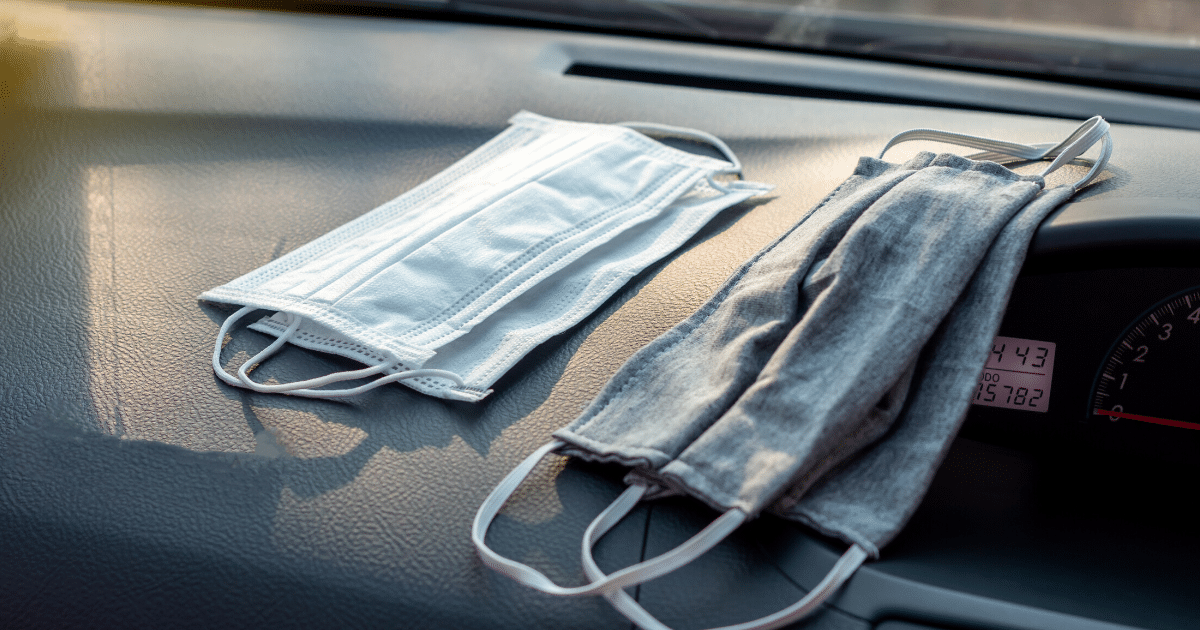
Service and Prep Your Vehicle
You want to be comfortable and safe on your trip, so put your mind at ease by giving your car a little love before heading out.
-
- Get it serviced. Schedule your car for a full service and inspection, which may include oil change, fluids check and top-off, tire check, brakes, etc.
- Double-check the emergency kit. Add, update, and replace items as needed. Use our handy essentials emergency kit article as your guide. Make sure it includes a first aid kit.
- Add Covid-specific supplies. Throw in extra masks, sanitizing wipes and gel (at least 60% ethanol or 70% isopropanol), and disposable gloves into your kit.
- Pack for comfort. Knowing you’ll be spending hours on the road, pack music, tablets, blankets, comfy shoes, and flip-flops, as well as jackets and easy-to-throw on layers. Sunglasses, stick-on sunshades, and sunscreen will help protect against all those UV rays (though not as hot in autumn, the rays can still do damage).
- Limit shopping along the way. Bring along things from home that you know are not contaminated, such as snacks, bottled water, medicine, phone chargers, and trash bags.
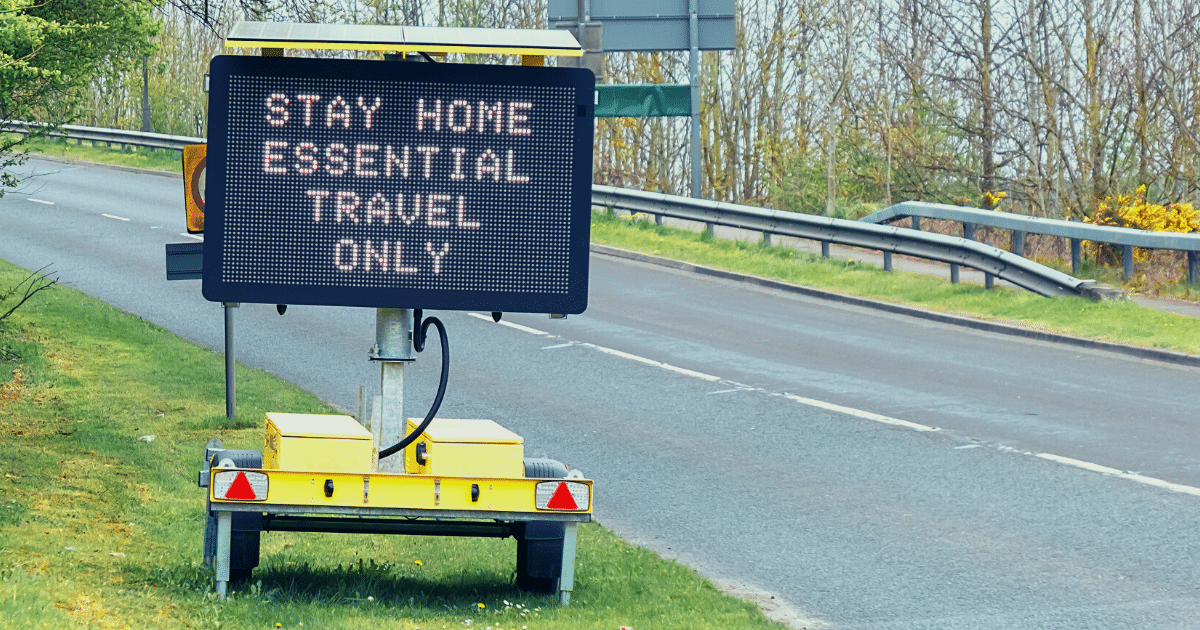
Plan It Out & Prep Ahead of Time
A lot has changed in the last several months, which means you’ll need to do a little more legwork ahead of your trip.
-
- Map out your route. Even if you’ve made this trip before, there may be unexpected closures along the way. Use a mapping app to get ahead of any problem areas.
- Check states and counties for Covid-19 case counts. Avoid traveling through areas with high breakouts or infection rates.
- Check travel restrictions for your destination and locations along the way. Some states and cities are requiring travelers from other areas to quarantine for 14 days upon entry (or are outright barring visitors).
- Before setting out, download one or two payment apps such as Apple Pay, Google Pay, Samsung Pay, and Android Pay to limit the number of germy PIN pads you have to touch.
- Have a plan in case you or a family member gets sick. This virus is wily, and sometimes sickness happens despite all your best prevention efforts. So have a contingency plan ready to go.
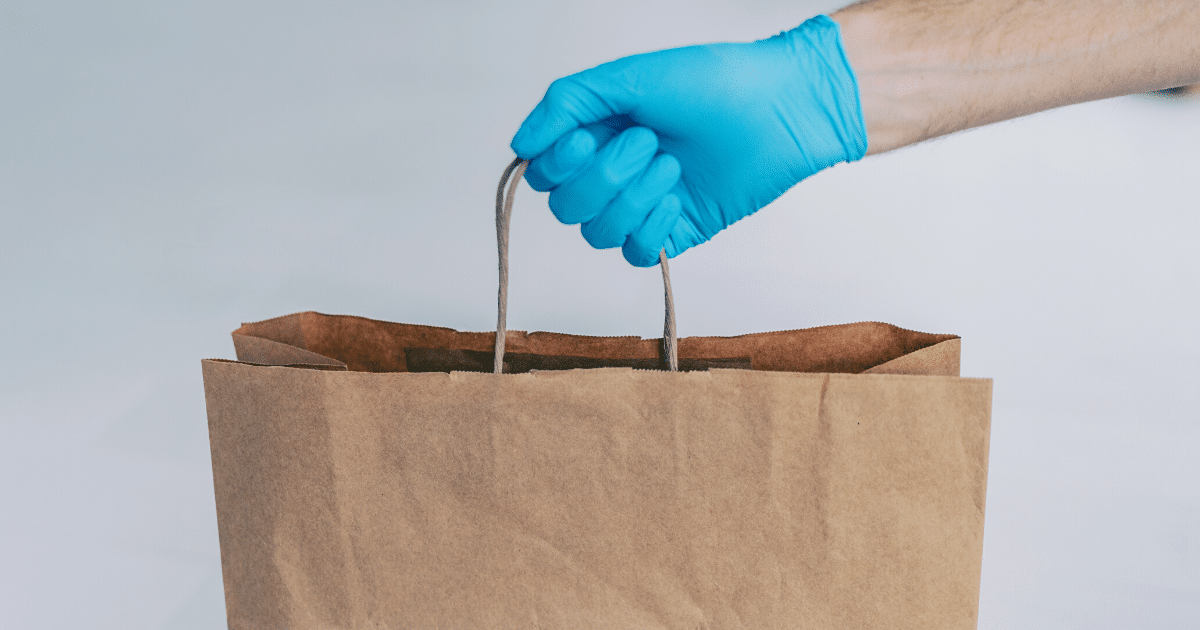
Have a Plan for Dining & Restaurants
Restaurants can be especially risky as hotspots for coronavirus transmission. Reduce yours and your family’s risk with these tips.
-
- Bring your own stash of non-perishable food in case of restaurant closures or limited dining options.
- Utilize drive-through, delivery, take-out, and curbside pick-up options if you want to reduce your exposure. Pack a family-sized picnic set (and blanket) ahead of time so you’ll have utensils and plates at the ready. Scout out parks or lakes where you and your family can eat.
- If a restaurant offers outdoor seating, choose that over sitting indoors. Bring coats and lap blankets if it’s chilly.
- If dining indoors, choose restaurants that maintain social distancing between tables indoors. Wear your mask as much as possible.

Know Your Game Plan for Hotels & Lodging
Because hotels are high-traffic areas, it’s important to take extra safety steps before, during, and after your stay.
-
- Research hotels and reserve in advance.
- Call ahead and ask about their policies on cleaning and disinfecting, as well as contactless check-in and check-out.
- Whatever the hotel’s stated cleaning policies, make sure you swipe high-touch areas in your room with disinfectant wipes: doorknobs and handles, bathroom fixtures and counters, light fixtures, TV buttons, and remote control, and any surface where you might put bags, computers, purses, etc.
- Ask the front desk to forgo housekeeping services, as it limits the number of people in your room.
- Minimize use of high-traffic areas such as lounge areas, dining areas, saunas, fitness centers, and salons.
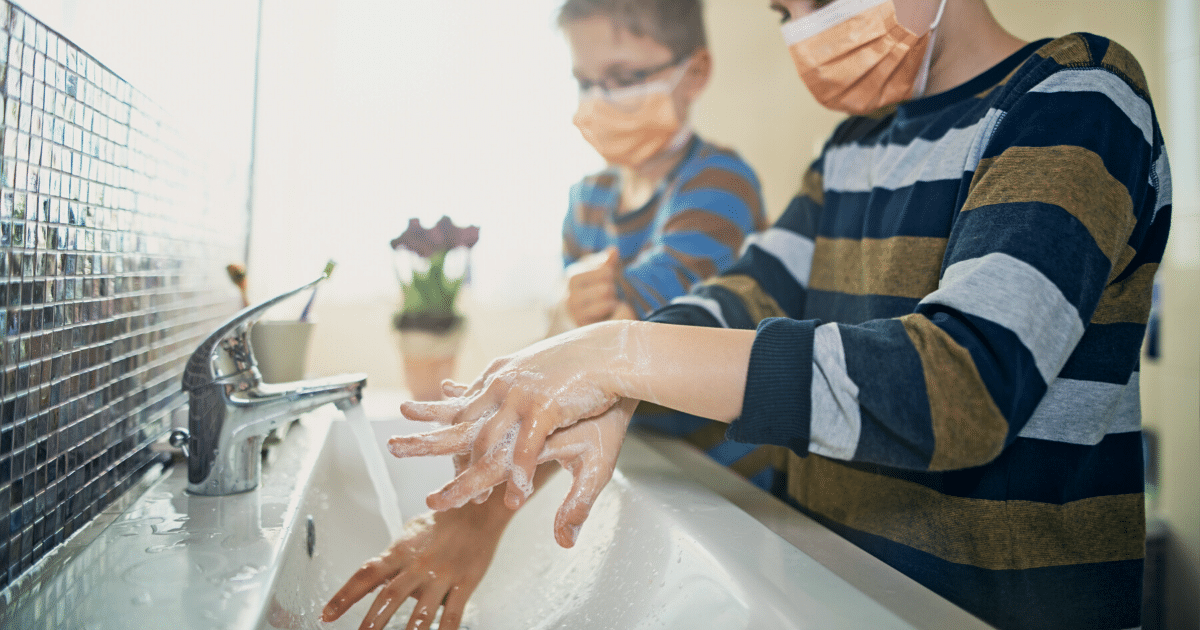
Must-Do’s for the Entire Trip
Make a habit of the following, and safety will soon become second nature.
-
- Follow the basics at all times: Frequent handwashing, mask-wearing in indoor public spaces (and outdoors where you can’t socially distance), and 6 feet distance between you and others outside your household.
- Limit the number of stops along your route.
- Use contactless payments wherever possible.
- Be cautious when touching fuel pumps – diligently use hand sanitizer after every use or use disposable gloves.
- Use hand sanitizer every time you enter your vehicle (same goes for family members), which will keep your vehicle’s interior clean.
- Wipe down your car’s interior every day – preferably multiple times. Especially germy surfaces include door handles, steering wheel, gear knob, stereo and temperature control dials, cup holders, and seatbelts.
- Have your whole family make a habit of wiping down their phones multiple times a day – phones may well be our most-touched item.
While road trips in 2020 may be nothing like those of the past, yours can still be something you and your family look back on with fondness, good feels, and probably some laughs as well.
This article is furnished by California Casualty. We specialize in providing auto and home insurance to educators, law enforcement officers, firefighters, and nurses. Get a quote at 1.866.704.8614 or www.calcas.com.
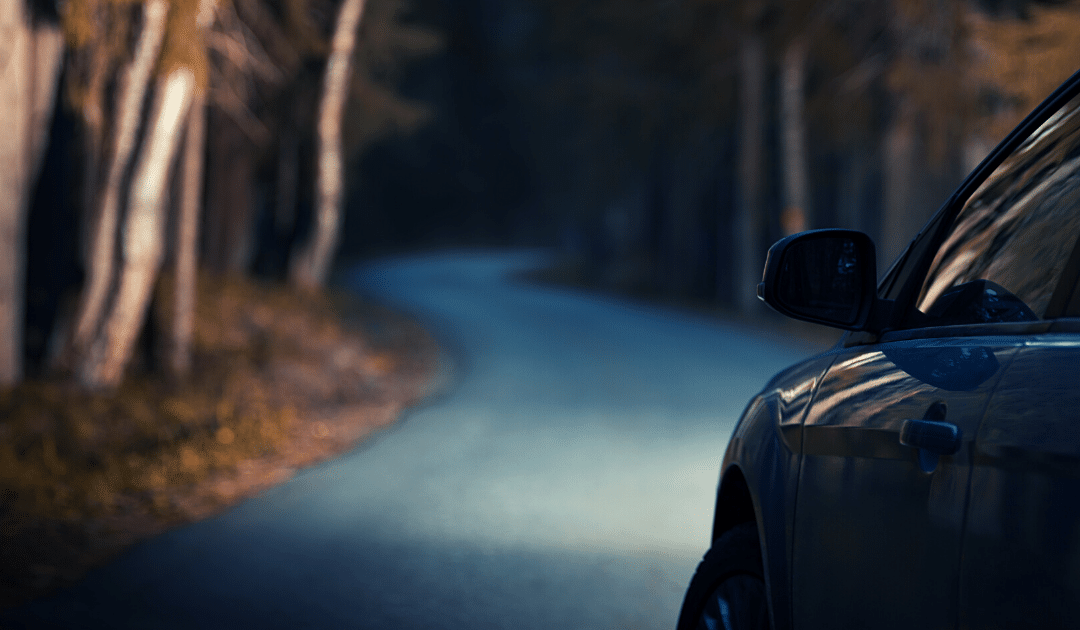
by California Casualty | Auto Insurance Info |
When daylight savings ends and our days become shorter, motorists will find themselves driving more often at dusk and in the dark.
As we turn our clocks back, it’s important to keep in mind that night driving is more dangerous than daytime driving – mostly due to reduced visibility and difficulty judging speed and distance. In fact, according to the National Safety Council, while we do only one-quarter of our driving at night, it’s when 50 percent of traffic fatalities occur.
Here are five ways you can stay safer on the roads at night.
1. Be Headlight Savvy
Proper headlight usage and maintenance will go a long way toward safe night driving. Remember the general rule of turning headlines on before sunset, and keeping them on for an hour after sunrise, which will help other drivers see you. Also:
-
- Aim headlights correctly (ask your dealer or mechanic/repair shop to double-check them next time you’re in).
- Make sure they’re clean.
- Regularly test your high beams, low beams, running lights, turn signals, and brake lights.
- On rural roads or other dark areas, use high beams. Dim them when you’re within 500 feet of an oncoming vehicle.
2. Slow Down and Give Room
Due to reduced visibility, drivers at night often need more time to both see other cars, pedestrians, and obstacles, and also to react safely. Give yourself the advantage by slowing down a bit and also giving yourself some extra room on the road.
-
- Increase your following distance from other vehicles.
- Allow more time for your journey.
- Be a(n extra) defensive driver, as others may be intoxicated or driving erratically.
- Watch out for pedestrians and wildlife. For the latter – collisions with deer are most common at dusk or at night, usually October through January (see our 30-second video on what to do if you hit a deer).
3. Give Your Car’s Interior a Once-Over
A little extra attention inside your vehicle can greatly affect how you see and react to things outside your car.
-
- Clean the windshield – inside and out – removing all streaks, smudges, and fogginess.
- Clean the other windows as well to reduce glare and condensation.
- Use your car’s defroster or heater to prevent your windshield from fogging up.
- Dim your dashboard lights so controls are still visible but not distracting.
- Use visors to shield the glare of outdoor street lighting.
- Avoid using cabin lights as much as possible when driving at night.
4. Stay Alert
Two big risks on nighttime roads are drunk driving and drowsy driving. Always remember and stay alert for other drivers who may be impaired due to alcohol, fatigue, or distraction. For yourself, never drive intoxicated and use the tips below to keep yourself alert.
-
- Take breaks if you need to – get out and do jumping jacks, shake out your limbs, stretch, take some deep breaths.
- If you’re on a long trip, try these things to stay awake: coffee or caffeinated drinks, windows rolled down for fresh air, talking, or singing to yourself.
5. Be Kind to Your Eyes
You can take steps, both in the moment while night driving, and in the longer term to take care of your eyes so they can take care of you on the road.
-
- Make sure you get your eyes checked regularly, which will alert you to any vision changes. If you wear prescription lenses, you may need a different prescription at night.
- Make sure your glasses are anti-reflective.
- Never wear dark or tinted lenses for night driving.
- To protect your eyes from drying out, aim your car’s vents away from your eyes.
- Keep your eyes moist by blinking regularly, especially if you wear contact lenses.
- Don’t look directly at oncoming headlights; instead, look at the road marker to your right until the car passes.
Finally, avoid two-lane highways at night if possible, as they’re especially dangerous. This and the other tips above will help you stay stress-free and safer during nighttime driving.
This article is furnished by California Casualty. We specialize in providing auto and home insurance to educators, law enforcement officers, firefighters, and nurses. Get a quote at 1.866.704.8614 or www.calcas.com.
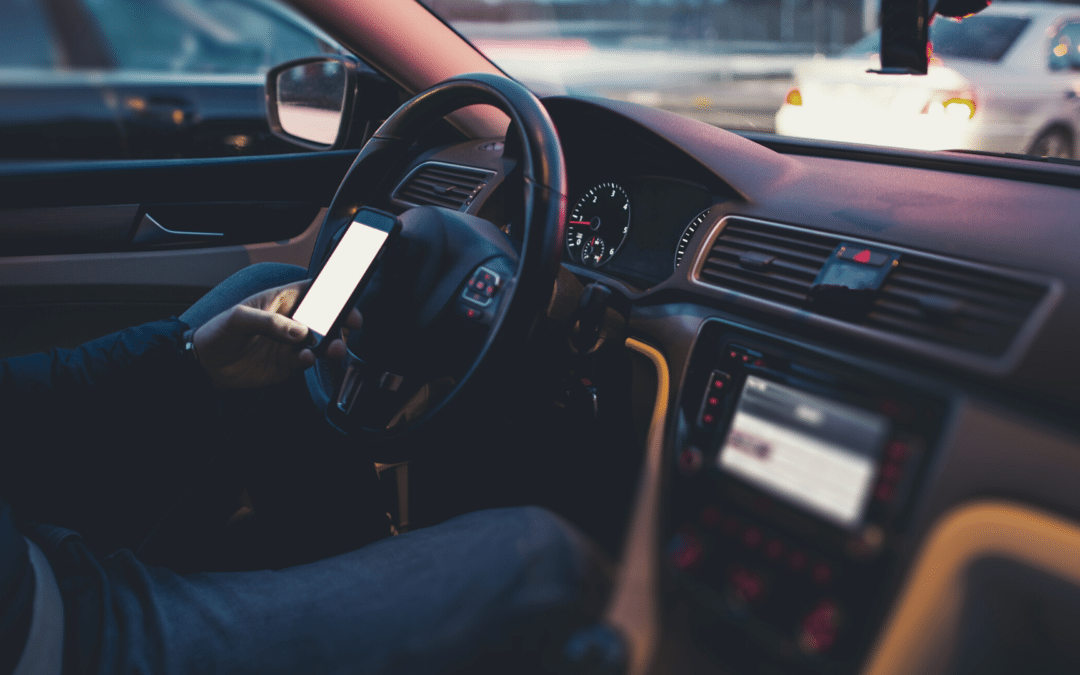
by California Casualty | Auto Insurance Info, Safety |
Stopping the texting habit can be really hard. We’re glued to our phones seemingly 24/7, and the alerts, dings, and chimes make them irresistible even when we’re behind the wheel.
This dangerous yet pervasive habit is causing some sobering statistics: 1.6 million crashes each year, with almost 390,000 injuries and more than 2,800 deaths.
Technology’s not going away anytime soon and self-driving cars are still off in the future – so how do we stop texting? Let’s look to psychology for some guidance – specifically, to some mental hacks to kick a habit.
How Habits Form
For a habit to become ingrained, a “habit loop” must first become established. This loop has 3 elements:
- This is the trigger that tells your brain to do something, like grabbing the phone when you hear a text chime. It’s often automatic—we don’t even realize we’re doing it.
- This is the behavior or action itself. Here, it’s picking up the phone and typing out a text reply.
- If there’s a reward after the behavior, it strengthens the habit loop. In this case, that might be an actual or anticipated reply, or the satisfaction of sending off that text that you keep meaning to send.
No wonder habits are so “sticky”—each step reinforces the next. Understanding how it works in your life is key to breaking the habit and forming a new one. It just takes a little self-awareness and a commitment to change.
Breaking the Habit Loop
By disrupting one or more components of the loop, you can transition to a life of text-free driving.
1.Review Your Cues: Figure out what’s making you reach for your phone.
-
-
- If you can’t ignore the sound alerts, turn your phone to silent and stash it out of sight (or better yet, out of reach).
- Install an app that silences your phone while you’re driving. These apps detect when your car is in motion and automatically silence it for the duration. Options include Not Disturb While Driving (iphones), Driving Detective for Android, or Google’s Android Auto.
- If your cue is boredom, practice mindfulness (a great skill for all aspects of life).
2. Refresh Your Routine: A few tweaks could make a big difference.
-
-
- Send texts before you leave, then put away the phone.
- If you have a passenger with you, have them be your thumbs.
- Sign off a conversation with X or #X, which means you’re driving.
- Let your 5 closest contacts know you’re changing it up. Most of our communications are just with them.
3. Reframe Your Rewards: Really contemplate the risks of texting while driving.
-
-
- Think back to a texting close call. Think through the worst-case scenario. Now write it down and keep it in plain view in your car. Read it every time you get in.
- Whenever you feel a temptation to reach for your phone, think of who would be devastated if you were to crash while texting.
- When not reaching for your phone, embrace the feeling of not being anxious and distracted.
Want to really kickstart your commitment? Sign The National Safety Council’s Just Drive pledge.. If you have young drivers at home, team up, and make the commitment together (and get safe driving tips for them here).
This article is furnished by California Casualty. We specialize in providing auto and home insurance to educators, law enforcement officers, firefighters, and nurses. Get a quote at 1.866.704.8614 or www.calcas.com.


















